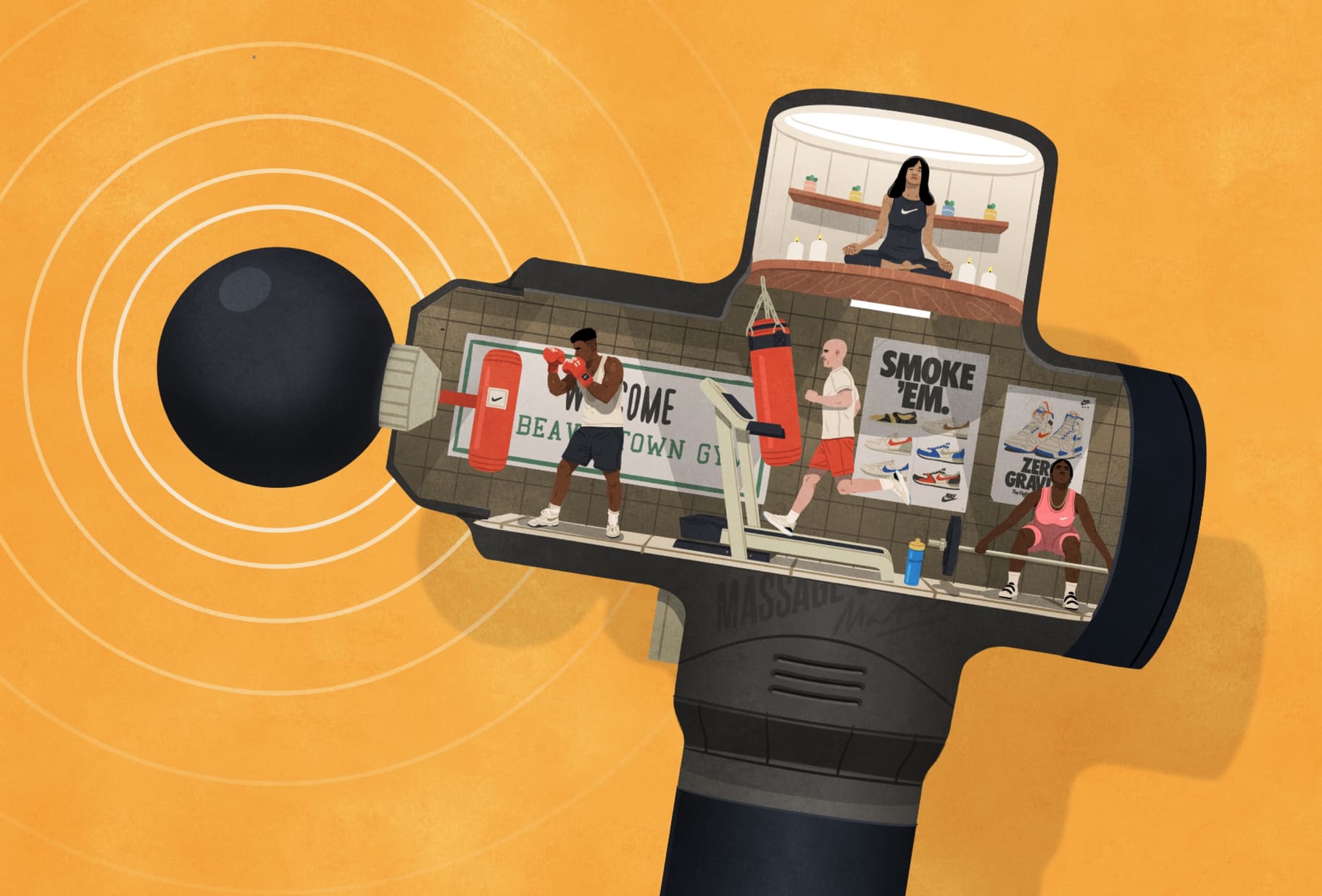What Exactly Is a Massage Gun? And Do You Need One?
Coaching
Get the lowdown on the increasingly popular high-tech recovery tool.

Imagine a power drill and a recovery ball had a baby. The result would be that strange device popping up next to the foam rollers at your gym, in your physical therapist’s arsenal, or in your favorite trainer’s social feed: a massage gun. But what is it? And with prices ranging from $99 to $600, who are they really for?
First, let’s knead out how massage guns work. A battery-powered motor attached to a rubber and/or foam head produces fast, repetitive strokes, called percussive therapy, at the rate of about 40 strokes per second, depending on the device. When the head makes contact with your body, it hits your muscles with smooth but intense force.
“We think this force causes solid substances within your connective tissue, or fascia, to become liquid,” says Paul Helms, a licensed massage therapist and the founder of Helms Performance in St. Louis and Philadelphia who frequently uses a massage gun on his sports clients. “This means the fascia surrounding your muscles will be more limber, so your muscles feel less stiff.”
There’s probably a neurological effect too. “When you massage a muscle, you actually aren’t immediately loosening it. The percussion contact causes the sensory neurons in the muscle’s tendons to detect an increase in tendon tension. That effect sends a signal to your brain, where the signal is processed, and your brain follows up by telling the muscle to relax,” explains Helms.
“We think this force causes solid substances within your connective tissue, or fascia, to become liquid,”
Paul Helms, Founder of Helms Performance and Licensed Massage Therapist
There’s no scientific research reviewing massage guns, which are still pretty new on the scene, yet. But a study published in the Journal of Clinical and Diagnostic Research found that while participants who tried either five minutes of vibration therapy or 15 minutes of massage reported significantly less soreness up to 72 hours after exercise than those who did neither, those who used a vibrating device recovered even faster than the massage group in the first 24 hours.
Massage guns are particularly effective for people who train hard and frequently. A gun can not only fast-track recovery, it can also improve your range of motion when used before a workout by loosening the fascia, says Helms. They’re also ideal for people training for an event, as they can help relieve tightness that can lead to overuse injuries, and for those prone to knots and localized pain. “A standard foam roller can’t get that deep or that localized into tissue, and there’s no way your hands can work as fast as a motorized head,” he says.
If you have access to a massage gun or are thinking of getting one, here’s what you need to know:
- Avoid danger zones.
Focus on your muscles and stay away from large vascular structures—including the vein in your neck, underside of your upper arm, and groin—and bones, including your spine. Women should also avoid using the gun on breast tissue, as the vibration can be too aggressive, says Helms.
- Focus on the lowest speed setting.
“I find that the first setting is strong enough for a majority of places and issues,” says Helms. If you aren’t feeling enough sensation during or enough release after, you can go up one level, but consider spending more time on the area instead of upping the intensity. “Especially when your muscles are sore, the goal isn’t to attack them. Less is often more,” he adds.
- Adjust for your goal.
Warming up? Helms says to gently press into an area for three to five seconds with a broad head attachment (like a big sphere), moving top to bottom or bottom to top. The light force stimulates the tissue without shutting it down for your workout. Need an allover post-training massage? Spend five to 10 minutes doing a sweep of your lower and upper body with a narrow head (such as a small triangle), focusing on major areas like your glutes, hamstrings, forearms, and between your shoulder blades (but not on your spine). If you want to work on a particularly gnarly spot, like the top of your calves, get in there (again with a narrow head) for 10 to 30 seconds—and remember to breathe through the discomfort.
Not interested in throwing down for a fancy recovery gadget? (We get it.) Using a lacrosse or golf ball will give you much of the targeted pressure you need for a fraction of the cost, says Helms.